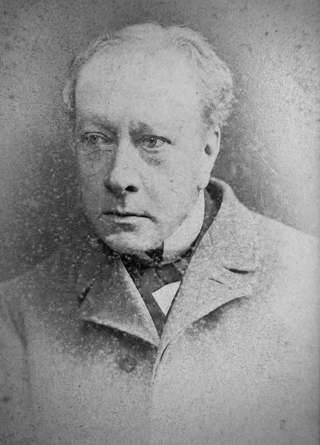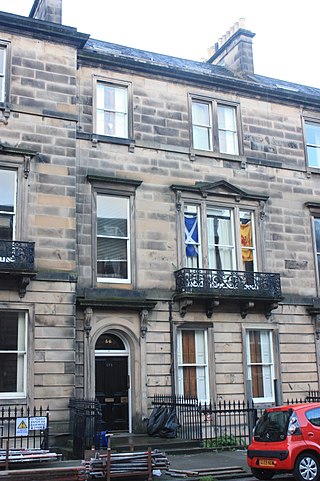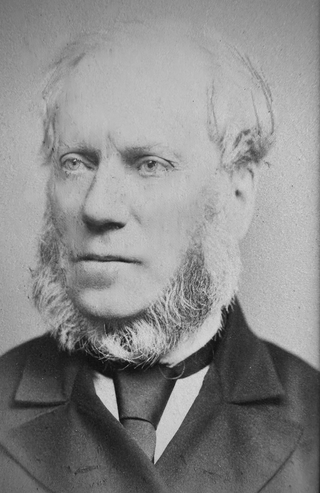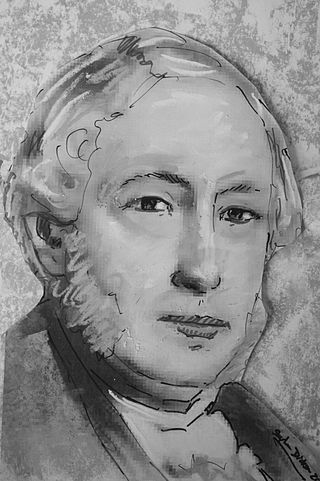
John Smith (1825–1910) was a Scottish dentist, philanthropist and pioneering educator. The founder of the Edinburgh school of dentistry, he served as president of the Royal College of Surgeons of Edinburgh (1883) and president of the British Dental Association. He was the official surgeon/dentist to Queen Victoria when in Scotland.

Sir David Percival Dalbreck Wilkie,, known to friends and colleagues as DPD, was among the first of the new breed of professors of surgery appointed at a relatively young age to develop surgical research and undergraduate teaching. At the University of Edinburgh, he established a surgical research laboratory from which was to emerge a cohort of young surgical researchers destined to become the largest dynasty of surgical professors yet seen in the British Isles. He is widely regarded as the father of British academic surgery.

James Begbie was a Scottish medical doctor who served as president of the Medico-Chirurgical Society of Edinburgh (1850–2) and as president of the Royal College of Physicians of Edinburgh (1854–6).

Sir Andrew Douglas MaclaganPRSE FRCPE FRCSE FCS FRSSA was a Scottish surgeon, toxicologist and scholar of medical jurisprudence. He served as president of 5 learned societies: the Royal Medical Society (1832), the Royal College of Surgeons of Edinburgh (1859–61), the Royal College of Physicians of Edinburgh (1884–87), the Royal Society of Edinburgh (1890–5), and the Royal Scottish Society of Arts (1900).

James Miller FRCSEd, FRSE was a surgeon and medical author in Edinburgh. He was author of the important 19th century textbook, Principles of Surgery. Like his father he became a member of the Free Church of Scotland in 1843 and was a firm believer in temperance.

James Scarth Combe FRSE, FRCSEd (1796–1883) was a British surgeon. He was the first person to give an accurate description of pernicious anaemia and to recognise that atrophic gastritis was a feature of the condition. He was elected a Fellow of the Royal Society of Edinburgh in 1850 and served as President of the Royal College of Surgeons of Edinburgh in 1851–52.

Robert James Blair Cunynghame of Cronan, FRCSEd, FRSE JP was a prominent Scottish surgeon, physiologist and early forensic scientist in the late 19th century. He served as President of the Royal College of Surgeons of Edinburgh from 1891 to 1893. He is said to have had a calm, beautiful face and his opinion was used as a benchmark to medical thought.

Patrick Small Keir Newbigging FRSE FRSSA FRCSE (1813–1864) was a Scottish surgeon and general practitioner. He was President of the Royal Medical Society and of the Royal Scottish Society of Arts. Together with his father, Sir William Newbigging he formed one of the few father-son pairs of former Presidents of the Royal College of Surgeons of Edinburgh. His observations on the origin of the heart sounds and of the apex beat of the heart made a significant contribution to the debate.

James Dunsmure FRSE FRCSEd was a Scottish surgeon. He served as President of the Royal College of Surgeons of Edinburgh.
Dr William Farquharson FRSE PRCSE FRCPE FSAS (1760-1823) was a senior Scottish surgeon during the Scottish Enlightenment. He served as President of the Royal College of Surgeons of Edinburgh 1806-8 and President of the Harveian Society of Edinburgh in both 1796 and 1805.

James Haig FergusonLLD FRSE FRCPE FRCSEd was a prominent Scottish obstetrician and gynaecologist. He served as President of the Royal College of Surgeons of Edinburgh from 1929 to 1931 and was president of the Edinburgh Obstetrical Society. He chaired the Central Midwives Board of Scotland and was manager of Donaldson's School for the Deaf. In 1929 he was a founding member of the British College of Obstetricians and Gynaecologists.

Robert Alexander Fleming FRSE (1862-1947) was a Scottish pathologist and medical author who served as President of the Royal College of Physicians of Edinburgh 1927–29.
Alexander Hamilton FRSE FRCSE FRCPE (1739–1802) was a Scottish physician. He was a co-founder of the Royal Society of Edinburgh in 1783. He was one of the first persons to recognise that puerperal fever was infectious. He was professor of midwifery at the University of Edinburgh.

Sir William Newbigging FRSE FRCSEd FRGS was a Scottish surgeon who served as President of the Royal College of Surgeons of Edinburgh from 1814 to 1816. He was a keen amateur geographer.
Dr George Augustus Borthwick FRSE FRCSE FSA (1784-1844) was a Scottish physician and surgeon. He was Physician to the Royal Dispensary in Edinburgh and helped to establish the Edinburgh Eye Dispensary.

Dr John MacWhirter FRSE PRCPE (1783–1854) was a 19th-century Scottish physician who served as president of the Royal College of Physicians of Edinburgh from 1831 to 1833.

William Inglis was a Scottish surgeon who had the unique distinction of serving as Deacon of the Incorporation of Surgeons of Edinburgh and then serving two further terms as President of the Royal College of Surgeons of the City of Edinburgh, as the organisation became known after receiving a Royal Charter in 1778. He was one of the earliest captains of the Honourable Company of Edinburgh Golfers.

Dr Ralph Stockman MD LLD FRCPE FRSE was a Scottish Professor of Materia Medica and Therapeutics at the University of Glasgow. He was an expert on iron deficiency anaemia.

Henry (Harry) Moss Traquair, FRSE, PRCSE was a Scottish ophthalmic surgeon who made important contributions to the science of perimetry and the use of visual field testing in the diagnosis of disease. He was President of the Royal College of Surgeons of Edinburgh in 1939/40 and President of the Ophthalmological Society of the United Kingdom.

William Wood FRCSEd FRSE was a 19th-century Scottish surgeon who twice served as President of the Royal College of Surgeons of Edinburgh, twice as President of the Medico-Chirurgical Society and once as President of the Harveian Society.


















